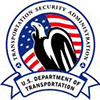
TSA Regulations May Include Randomizers for Enhanced Airport Security
- By Ginger Hill
- Jul 11, 2013

Airport security lines are so unpredictable. Sometimes the lines are short and flow easily, but other times the lines are long and jammed.
Well, the TSA thinks they have figured out a way to not only make lines flow faster, but also to thwart potential security evaders by making it more difficult for them to gauge which security line they will get sent to.
Last month, the TSA issued a RFI asking interested vendors to submit ideas for procuring Randomizers that will be used as a bias-free way to randomly route passengers to different checkpoint lines. Because the TSA uses a multilayered approach to security, Randomizers would support this approach with a layer of unpredictability as an added security measure.
This all sounds great, but what exactly is the TSA hoping to achieve by using Randomizers? They hope to:
- Make it difficult for terrorists to plan to be in a security line with a specific explosive detection device or screening procedure;
- Give TSA an automated way to manage security lines;
- Help prevent profiling; and
- Choose passengers randomly without using labels, colors or anything that would indicate any bias for or against any traveler.
If randomizers are adopted, they will be deployed at medium and large commercial U.S. airports.
Source: http://www.usatoday.com/story/todayinthesky/2013/07/11/tsa-eyes-electronic-randomizers-to-sort-security-lines/2508349/
About the Author
Ginger Hill is Group Social Media Manager.